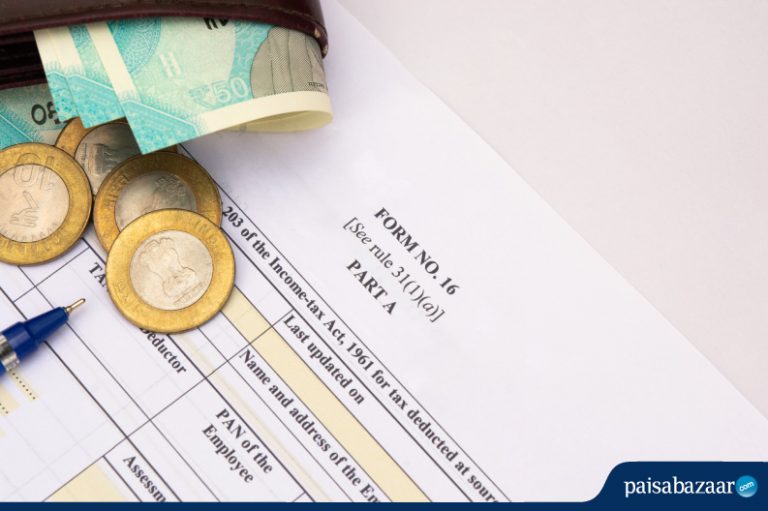

If you have changed jobs during the financial year, you will receive multiple Form 16 tax statements. Income Tax Form 16 is a key document for filing your Income Tax return as it contains details of your income earned, TDS deductions, tax saving investments data and more. In the following sections, we will provide some tips to help you collate the data in multiple Form 16 tax statements so that you can file your taxes with ease.
Form 16 Format
Form 16 is available only to salaried individuals and is issued u/s 203 of the Income Tax Act, 1961. The format of this tax statement is pre-decided by the Income Tax Department and is the same irrespective of who your employer is. This document features two sections – Part A and Part B. Form 16 Part A contains details of tax paid to the government via the TDS mechanism along with the TAN (Tax deduction and collection Account Number) of the deductor i.e. your employer.
Part B of Form 16 contains details of the income earned during the year from salary/bonus, tax saving investments, HRA received/exempt HRA, standard deduction, etc. The CBDT (Central Board of Direct Taxes) has recently announced some key changes in Form 16 Part B such as break down of all salary components and tax saving investments. This change has come into effect in AY 2019-20 and is expected to make it easier to fill out the appropriate Income Tax Return form.
Calculating TDS Paid from Multiple Form 16 Data
If you have received multiple Form 16 documents, each Form 16 Part A is liable to have a different TAN along with different TDS amounts that have been deducted from your salary during the applicable period. So if you have multiple Form 16 documents for a fiscal, you will have to combine the TDS amount on each Form 16 to know the total TDS that you have paid for the applicable financial year.
Similarly, the data contained in Part B of Form 16 will also have to be collated in order to calculate your total income for the year (from salary/bonus), total tax saving investments made, HRA received/exempt and so on. Based on this data, you can calculate and verify your total tax liability for the year.
How do I get Form 16 from my Previous Employer?
Form 16 is to be mandatorily provided in digital or hard copy by an employer to any employee who has been paid a salary during the applicable financial year. It is however not unusual to have not received a Form 16 from your previous employer if the company went out of business or you forgot to ask for it in the first place. If it’s the latter case, get in touch with your previous employer’s HR or Finance department and request them to issue your Form 16 for the applicable financial year. But, in case it is not possible to get your Form 16, you will have to calculate your income, income tax, refunds, etc., using your payslip/salary certificate received from the previous employer and Form 26AS.
Know More: How to download Form 26AS
Verifying the Collated Data
The details collated from the Part A of Form 16 are easy to verify using data obtained from Form 26AS. Form 26AS can be downloaded for free from the TRACES website. Form 26AS data which is consolidated across various types of TDS and TCS shows tax credit entries from multiple TAN holders including employers. In case of a mismatch, the data contained in Form 26AS will be considered the correct one and you will have to file taxes accordingly.
Verifying collated details from Form 16 Part B is comparatively trickier. This is because it is possible that certain entries might have been repeated. Duplicate entries that are most common in case you have more than one Form 16 include the following:
- Standard Deduction (Rs. 40,000 for AY 2019-20)
- Tax Saving Investments u/s 80C through 80G. (up to applicable limits)
- HRA Exemption (if provided for entire fiscal by both employers )
The above and any other exemption can be applied only once to your salary so if more than one Form 16 features the same tax saving allowance or if statutory deduction has been applied by two different employers for the same fiscal, you will have to recalculate your tax liability according to the applicable income tax slab rate.

Get FREE Credit Report from Multiple Credit Bureaus Check Now
Is there a Simpler Way?
Of course there is. You could engage the services of an online third party Income Tax e-filing intermediary, a tax return preparer or a CA/tax lawyer to sort out the process of how you can file your taxes using more than one Form 16. It might cost you a bit of money, but it will save you quite a bit of time and significantly decrease the possibility of an erroneous tax filing especially if you have limited experience of filing ITR.